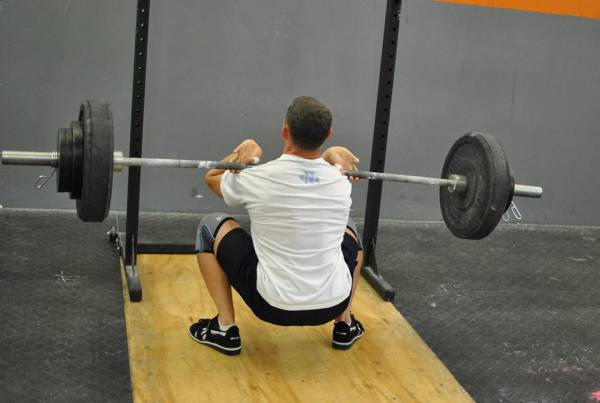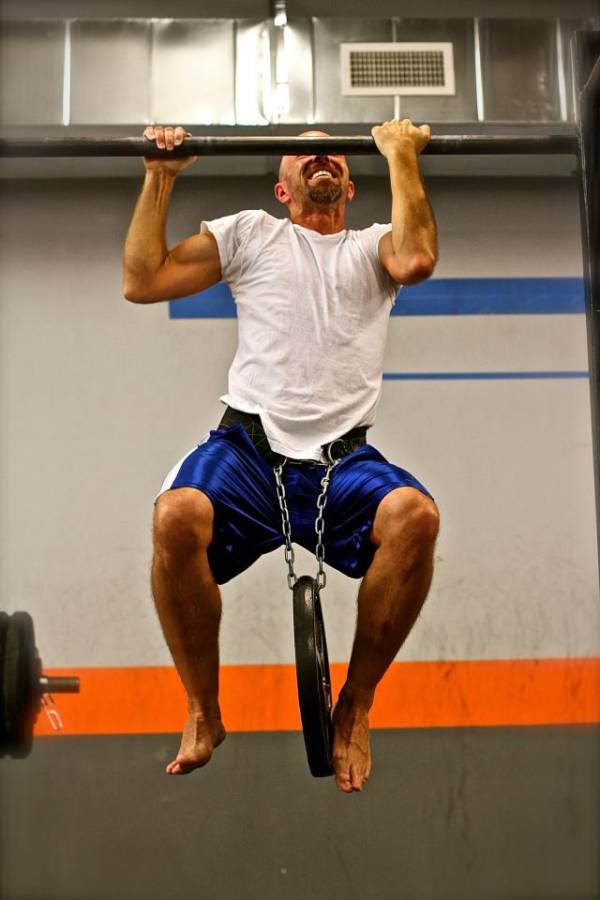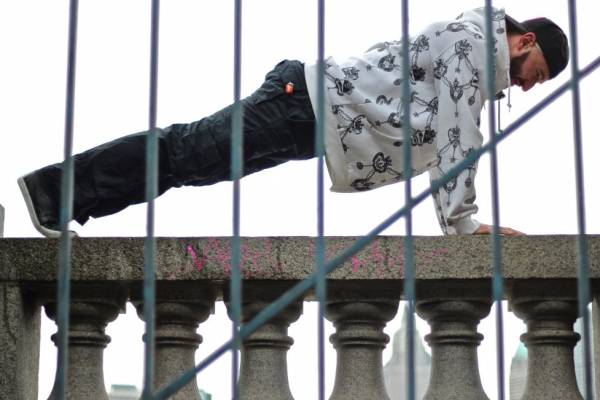I see a lot of confusion among martial arts students when it comes to stepping into the weight room. There is nothing wrong with having no idea what to do – fighters are taught how to beat people and break their arms, not pick up heavy iron objects. But, if you do practice martial arts, then there is a minimal amount of strength training you should be doing in order to maximize your performance. To help with the confusion I have compiled a list of some of the best bang-for-your-buck exercises for the martial artist.
There are thousands of exercises to select from, so I tried to capture the most beneficial and efficient movements for the sport of muay Thai. The exercises listed below have been selected for several reasons. First, when performed they yield increased performance to the athlete. Whether in the form of strength, speed, or conditioning they increase some of the individual’s athletic attributes. The second reason I chose to select these exercises is that they help improve the athlete’s mobility and resilience to injury in some way, shape, or form.
Exercise #1: Deadlifts
Hands down one of the best strength-building exercises on the planet, particularly for the posterior chain. I don’t care what sport you do, if you’re not deadlifting you are missing out on some huge strength gains. Generally for my fighters, I keep the reps low and the rest periods long with the focus of the session being on perfect form, as I don’t want them to gain weight in the form of muscle mass.
One of the deadlifting protocols I commonly have my fighters use is the 5-3-2 that strength guru Dan John recommends in his book Easy Strength. I don’t have my fighters use percentages of their one-rep-max when performing deadlifts. This is because these guys are training two to three times a day and they feel differently on a daily basis. Some days they are ready to go to war, while on others they’re dragging their feet. I have seen the best results with having them lift heavy, but never max out. On days when they feel beat up, I have them lift lighter and save their strength for later.
The deadlift workout looks something like this for a 150lb fighter:
- 5-10 reps warm up at a light weight, like 135lbs
- 5 reps at a medium weight, like 225lbs
- 3 reps at a pretty heavy weight, like 275lbs
- 2 reps at a heavy-ish weight, like 315lbs
Exercise #2: Front Squats
 The front squat is another fantastic strength building exercise I commonly use in my training. It is superb at strengthening the trunk and lower body, while saving the knees and the lower back from some of the stress often associated with back squatting. Another benefit provided by the front squat is the improved hip, knee, and ankle mobility that comes along with its continued practice. I also like to employ the front squat because of its versatility. Front squats can be performed with a single or double kettlebell, dumbbells, or a barbell.
The front squat is another fantastic strength building exercise I commonly use in my training. It is superb at strengthening the trunk and lower body, while saving the knees and the lower back from some of the stress often associated with back squatting. Another benefit provided by the front squat is the improved hip, knee, and ankle mobility that comes along with its continued practice. I also like to employ the front squat because of its versatility. Front squats can be performed with a single or double kettlebell, dumbbells, or a barbell.
When I have my fighters front squat, it will be for sets of 3 or 5 reps for up to 5 sets. It will generally look like this:
- 5-10 rep warm up at a light weight
- 5 x 3 at a heavy weight
- 5 x 5 at a medium weight
Exercise #3: Pull Ups
 Pull ups are a great exercise if your sport requires you to pull your own body weight or manipulate the weight of your opponent. For muay Thai, pull ups are a great tool for improving your strength in the clinch, particularly weighted chin ups as they directly simulate your clinching position. When prescribing pull ups for my fighters I generally have them perform a rep ladder drill while super setting with a lower body press, such as a front squat.
Pull ups are a great exercise if your sport requires you to pull your own body weight or manipulate the weight of your opponent. For muay Thai, pull ups are a great tool for improving your strength in the clinch, particularly weighted chin ups as they directly simulate your clinching position. When prescribing pull ups for my fighters I generally have them perform a rep ladder drill while super setting with a lower body press, such as a front squat.
- Weighted chin up x 1, 2, 3
- Front squat x 2, 3, 5
- Repeat for 3 ladders
It looks like this: after you complete your first pull up, go directly to the front squat and do two reps. Then go back to the chin up and do two reps. Then back to the front squat. Continue to climb the ladder until you’ve completed the ladder a total of three times through.
Exercise #4: Single-Arm Push Ups
 If you want strong-ass punches, then do your push ups. I know not everyone is able to do a strict, one-arm push ups but there are a ton of progressions available to get you there. I never have my fighters do more than three reps in a set and I always put these after some gut-wrenching conditioning, like resisted sprints or pushing the weight sled. The purpose of performing the push ups right behind the conditioning is to get my fighters used to switching from moving quickly to not moving, but still exerting at a high level quickly and efficiently.
If you want strong-ass punches, then do your push ups. I know not everyone is able to do a strict, one-arm push ups but there are a ton of progressions available to get you there. I never have my fighters do more than three reps in a set and I always put these after some gut-wrenching conditioning, like resisted sprints or pushing the weight sled. The purpose of performing the push ups right behind the conditioning is to get my fighters used to switching from moving quickly to not moving, but still exerting at a high level quickly and efficiently.
Exercise #5: Sprints
I love sprints. They create game-changing conditioning in fighters. So, do them and make them hard. I am a particular fan of having my fighters push the weight sled or strapping bands to their waists and making them do resisted sprints. I would recommend that in order to preserve form, you do shorter sprints at a max effort for six to eight sets. Just remember that sprinting is an extremely intense exercise and needs to be done with caution and attention to detail. Long rest periods will maximize your or your fighter’s performance with this awesome exercise.
Photo 1 courtesy of Orion Lee.
Photos 2 & 3 courtesy of CrossFit Impulse.
Photo 4 courtesy of Al Kavadlo and DragonDoor.






